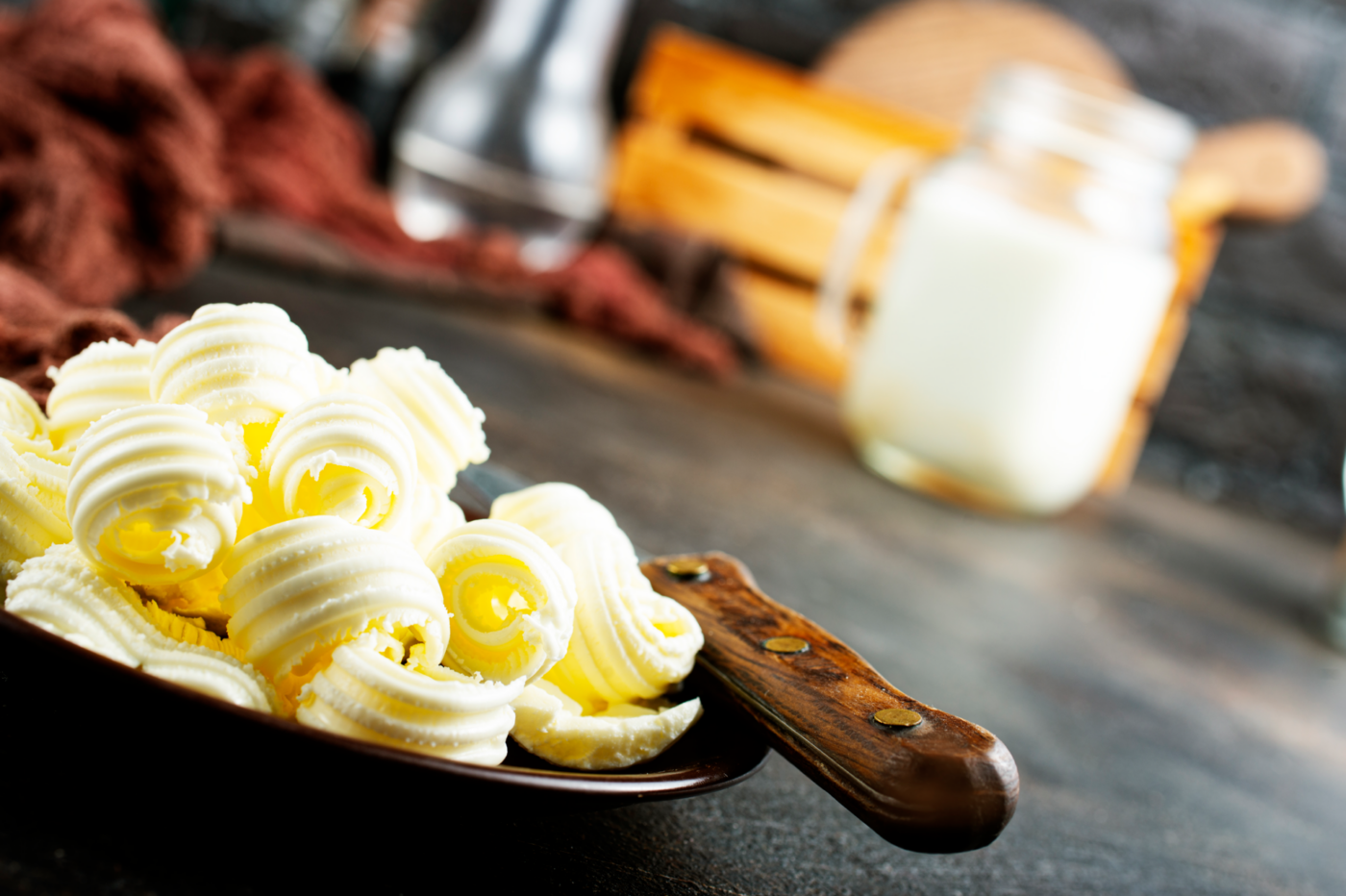Read More: Nutritional Information on Types of Butter: Unsalted, Salted, Europen Style
The Foundation: Butterfat
The core of all butter is butterfat, the fat naturally present in milk. Butterfat is primarily composed of saturated fatty acids, but it also contains smaller amounts of monounsaturated and polyunsaturated fatty acids. The specific fatty acid profile can vary slightly depending on the cow’s diet (grass-fed vs. grain-fed), but the overall dominance of saturated fat remains consistent.
Saturated fat has long been a subject of dietary debate. While excessive intake of saturated fat is linked to increased LDL (“bad”) cholesterol levels, which can contribute to heart disease, recent research suggests that the relationship between saturated fat and heart health is more complex than previously thought. Some studies indicate that the type of saturated fat, and the overall dietary context, may be more important than the total amount.
Butterfat also contains small amounts of fat-soluble vitamins, particularly:
- Vitamin A: Important for vision, immune function, and cell growth.
- Vitamin D: Crucial for calcium absorption and bone health. (Note: Some butter may be fortified with vitamin D.)
- Vitamin E: An antioxidant that helps protect cells from damage.
- Vitamin K2: Plays a role in blood clotting and bone health.
The amounts of these vitamins in butter are generally not substantial enough to make it a significant source of these nutrients. A balanced diet rich in fruits, vegetables, and other nutrient-dense foods is far more important for meeting vitamin needs.
Unsalted Butter: The Purest Form
Unsalted butter, as the name implies, contains no added salt. It’s essentially pure butterfat (minimum 80% in the US, but can be higher) and water. The nutritional profile of unsalted butter reflects this simplicity:
- High in Fat: Predominantly saturated fat.
- Zero Sodium: This is the key distinguishing feature.
- Small Amounts of Vitamins: Contains small amounts of fat-soluble vitamins A, D, E, and K2.
- Cholesterol: Butter contains cholesterol, but dietary cholesterol has less impact on blood cholesterol levels than previously believed for most people.
Unsalted butter is often preferred by bakers because it gives them complete control over the salt content of their recipes. It’s also favored by those who are monitoring their sodium intake.
Salted Butter: Sodium Added
Salted butter is simply unsalted butter with added salt. The amount of salt can vary depending on the brand, but it typically ranges from 1.5% to 2.5% salt by weight. This translates to roughly 90-100 milligrams of sodium per tablespoon (14 grams) of butter.
The nutritional profile of salted butter is similar to unsalted butter, with the crucial difference being the sodium content:
- High in Fat: Predominantly saturated fat.
- Contains Sodium: The amount varies, but it’s a significant source of sodium.
- Small Amounts of Vitamins: Similar to unsalted butter.
- Cholesterol: Present, as in all butter.
The added salt in salted butter not only enhances flavor but also acts as a preservative, extending its shelf life slightly. However, the added sodium is a significant consideration for those watching their sodium intake.
European-Style Butter: Higher Fat, Cultured Flavor
European-style butter is characterized by a higher butterfat content than standard American butter. In the US, butter must contain at least 80% butterfat. European-style butters typically contain 82% to 86% butterfat, and sometimes even higher. This higher fat content results in a richer, creamier texture and a more intense flavor.
Another key difference is that many European-style butters are cultured. This means that the cream is fermented with lactic acid bacteria before churning. This fermentation process produces diacetyl, a compound that gives butter a characteristic “buttery” aroma and flavor. Cultured butter often has a slightly tangy taste.
The nutritional profile of European-style butter reflects its higher fat content:
- Very High in Fat: Even higher in saturated fat than standard butter.
- Sodium Content Varies: Can be salted or unsalted. If salted, the sodium content will be similar to standard salted butter per serving, although the higher fat content means slightly less sodium per gram of butter.
- Small Amounts of Vitamins: Similar to other butters, but may have slightly higher levels of fat-soluble vitamins due to the higher fat content.
- Cholesterol: Present, and slightly higher per serving than standard butter due to the higher fat content.
- Possible Probiotic Benefits (if cultured): Cultured butter may contain live and active cultures, which could offer some probiotic benefits, although this is not its primary nutritional attribute.
European-style butter is prized by chefs and bakers for its superior flavor and texture. It’s particularly well-suited for pastries, sauces, and spreading on bread.
The Bottom Line: Moderation and Choice
All types of butter are high in saturated fat and calories. The key nutritional takeaway is that moderation is essential, regardless of the type of butter you choose.
- For Sodium Control: Unsalted butter is the clear choice.
- For Flavor and Texture: European-style butter offers a richer, creamier experience.
- For General Use: Salted or unsalted butter can be used, depending on personal preference and recipe requirements.
When choosing butter, consider your individual dietary needs, your sodium intake from other sources, and the specific culinary application. A balanced diet that emphasizes whole foods, fruits, vegetables, and lean protein, with butter used in moderation, is the best approach for overall health. Butter, in all its forms, can be part of a healthy and delicious diet when enjoyed responsibly.




Comments